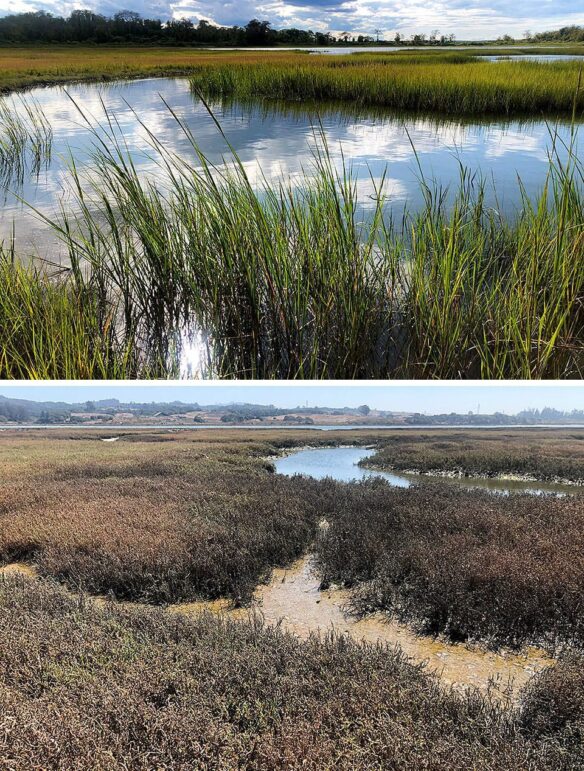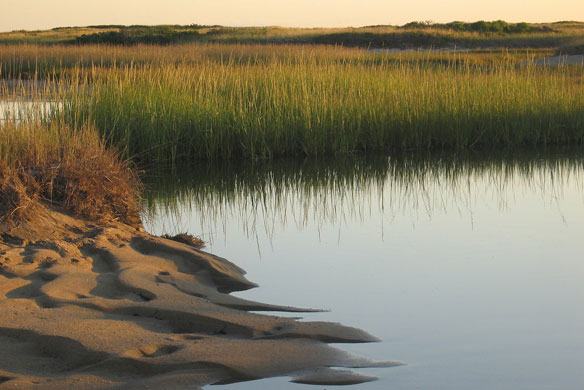
Can you tell if the two marshes shown above are thriving or deteriorating over time?
By NOAA;
Two Unhappy Marshes
Researchers found that both of these marshes are “unhappy,” even though one of them appears to be vibrant and healthy. “Happy,” or persistent, marshes all share common traits. It is more difficult to characterize “unhappy,” deteriorating tidal marshes, because these ecosystems can fall apart in many different ways. By understanding how marshes can deteriorate so differently, coastal managers can make wiser conservation decisions.
NOAA research reserve scientists and partners recently published a study that examines the secret to marsh happiness. The team learned that “happy” marshes shared similar characteristics, whereas “unhappy” marshes deteriorate in diverse ways. By understanding how marshes can deteriorate so differently, coastal managers can make wiser conservation decisions.
Published in Environmental Research Letters, the study ground-truthed previous resilience findings from the National Estuarine Research Reserve System and U.S. Geological Survey. Many partners contributed, and the authors included scientists from the Elkhorn Slough and Narragansett Bay Research Reserves.
According to the study, “happy,” or persistent, marshes all shared common traits. What healthy marshes shared most of all was vegetation distributed on the higher end across low-to-high landscape elevations. The single most important measurement in assessing a “happy” tidal marsh is whether a sizeable proportion of its vegetation is at a high elevation in relation to current water levels. Another feature of “happy” marshes is a low percentage of unvegetated versus vegetated area in the marsh landscape.
Characterizing an “unhappy,” deteriorating tidal marsh is more complex because marshes can fall apart in many different ways. One finding contradicted a previous assumption: namely, that gains in marsh elevation and sediment indicate greater resilience. The authors say marshes with these characteristics performed inconsistently and often signaled the muddy mess that degrading marshes can become, not marsh health.









